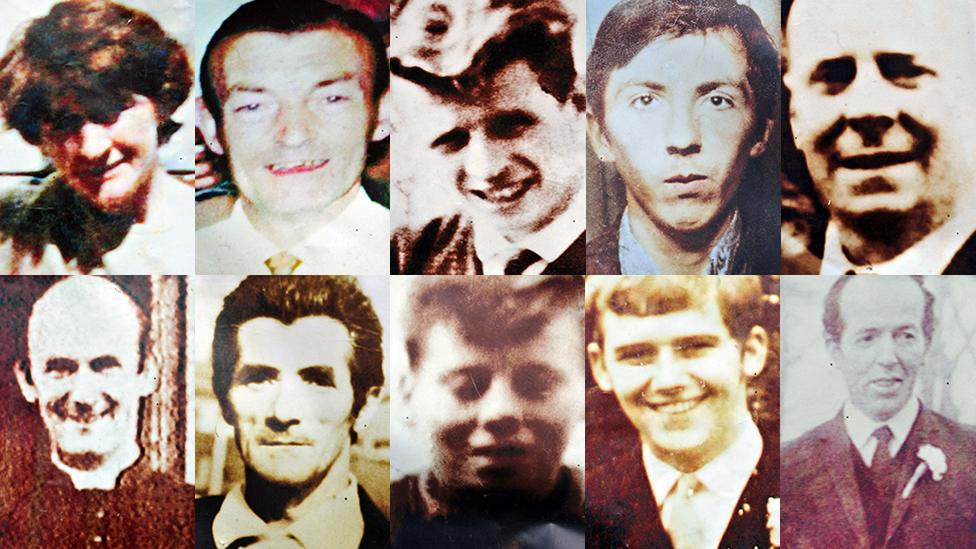Ballymurphy inquest: Soldier on lookout as bodies recovered
- Published
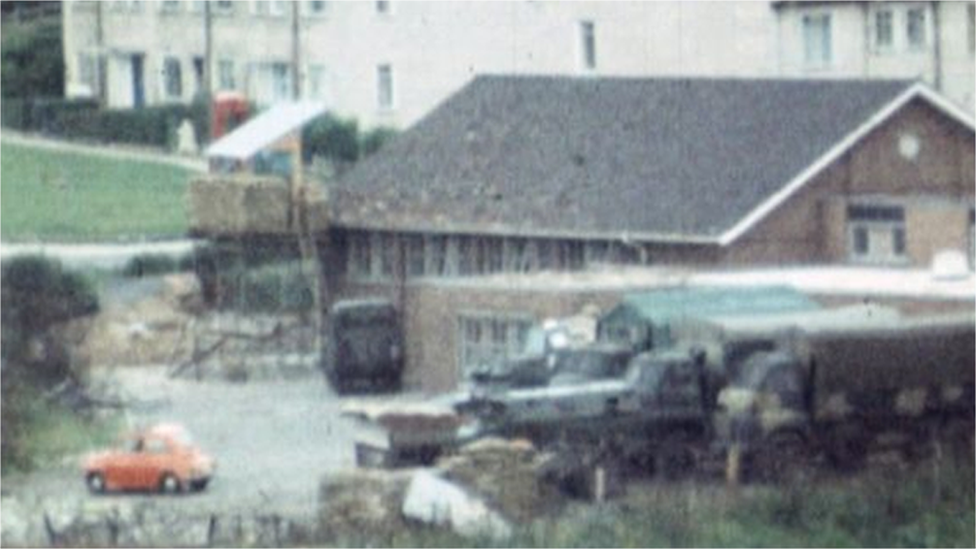
Soldiers from the Parachute Regiment were based at Henry Taggart Army base
A former soldier told the Ballymurphy inquest he was acting as a lookout as bodies were recovered from waste ground opposite Henry Taggart Army base.
Four people died as a result of shooting there the day internment was introduced in August 1971.
They were Joan Connolly, Joseph Murphy, Noel Phillips, and Daniel Teggart.
M572 was a member of 6 Platoon, B Company 2 Para. He told the court he served several tours in NI, but did not fire his weapon in 1971.
The inquest is looking into the shooting dead of 10 people in the Ballymurphy area of west Belfast in August 1971.
The shootings occurred amid disturbances sparked by the introduction of internment without trial in Northern Ireland.
M572 described shooting at the base coming from the surrounding area, beginning with a burst of four to five rounds from a Thompson submachine gun.
He said thought he saw smoke after that gunfire.
He said he thought Army sentries in sangars outside had returned fire at later shooting, and agreed that they would have been members of his platoon.
He was questioned at length why he did not remember the names of any of his fellow platoon members.
M572 said he had served several tours with many fellow soldiers, and had been new in the platoon at the time.
Later he was able to provide some extra names of soldiers he thought might have been present, to assist the coroner.
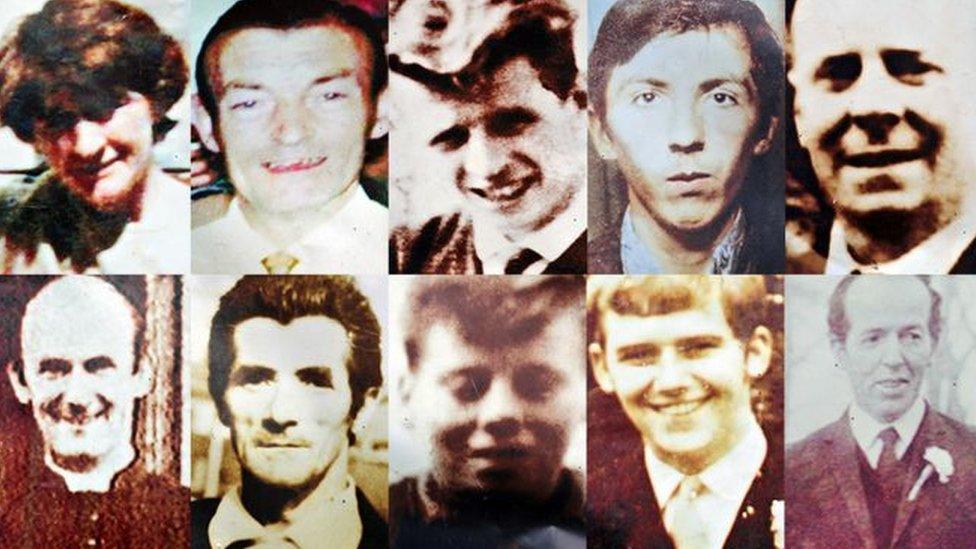
Ten people were killed in the shootings at Ballymurphy in 1971
Later on 9 August 1971, he said, he went out alongside an armoured vehicle with about 10 soldiers on foot to recover the bodies of civilians lying in the manse area.
M572 said he was acting as lookout, and spent the time watching the surrounding area, without recovering any bodies himself.
He said that later, when back in the Henry Taggart base, he saw the body of a woman placed in a corridor to make room for casualties in the medical room.
'Ashamed?'
Later M572 said he had suffered from PTSD after leaving the Army and had cut off all contacts with former colleagues and "tried to bury things".
A barrister for the family of Joseph Murphy asked if the gaps in M572's memory were because he was ashamed of what happened that night.
"I am not ashamed of anything, I've done nothing to be ashamed of," M572 replied.
The barrister asked if he might be ashamed of what other paratroopers had done.
The former soldier said he did not believe they had, but added: "If they done anything reprehensible, then I would be ashamed."
M572 added that he was anxious that his memories of several years of tours in Northern Ireland did not overlap and cause him to give false information to the inquest.
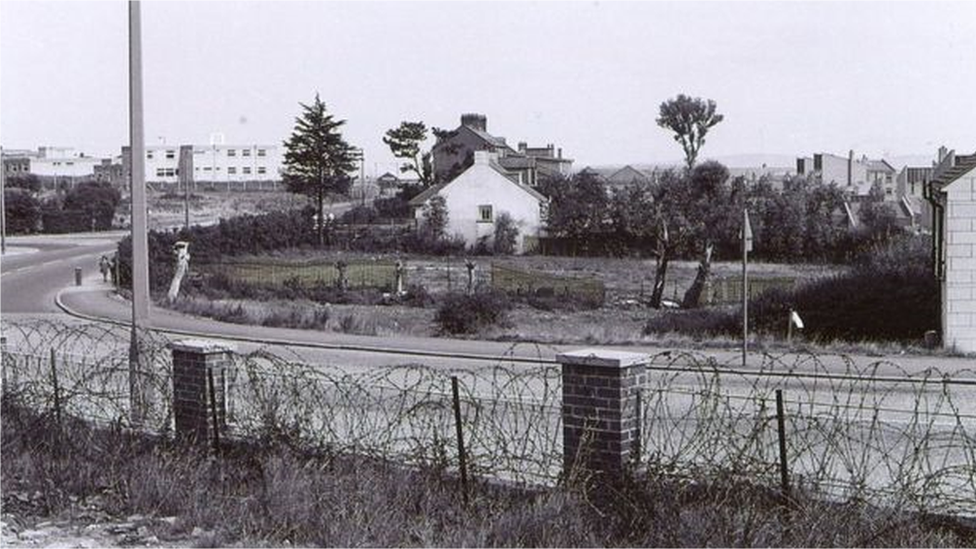
The manse field area opposite the Henry Taggart Hall
Later Margaret Mervyn, née McStravick, told the court of the night she helped young boys escape from the manse field where they had lain under fire. She was 22 at the time.
The court has already heard from Edward and Martin Butler, and Francis Notarantonio, whom she was able to help.
The McStravicks lived at 34 Springhill Crescent, right beside the manse field area.
Aged 11 in 1971, Edward Butler was shot and seriously injured just as he was about to reach safety.
Mrs Mervyn said many rounds fired by soldiers from the Henry Taggart base struck her parents' home.
The McStravicks cared for the casualties until Edward was later removed and taken to hospital.
Second inquest
Later, soldier M553 gave evidence by video link about his experience in the Henry Taggart Hall during the shooting.
This man had previously given evidence as Soldier C at the Henry Thornton Inquest in 2015.
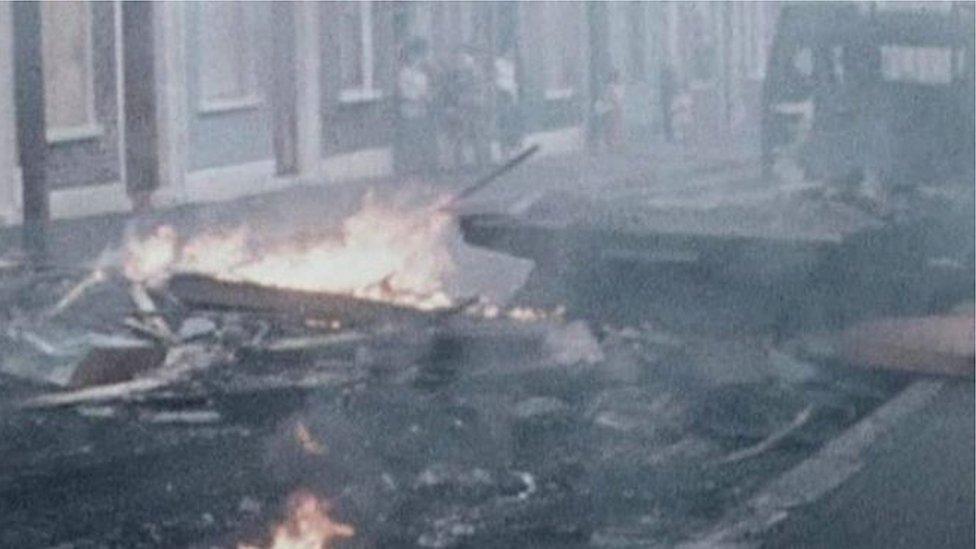
The Army's fatal shooting of Henry Thornton near a west Belfast police station in 1971 sparked rioting in the area
Mr Thornton was shot and killed on the Springfield Road just two days before the incidents at Ballymurphy in August 1971.
At that inquest, the coroner concluded he did not accept some of M553's account of what happened.
'Field punishment'
At the Ballymurphy inquest on Thursday, M553 also agreed that in July 1971 he had been sentenced to 28 days detention for being asleep at his post.
He said that rather than being kept in a cell, he had then been posted to B Company 2 Para at the Henry Taggart Hall on "Field Punishment".
It was explained to him that the Battalion Adjutant, M226, had previously described him to the inquest as a "problem soldier" who was generally kept out of the way at headquarters.
The former adjutant had told the inquest he'd have been surprised if M553 had been allowed near the Henry Taggart base.
M553 insisted he had been posted to B Company 2 Para in Ballymurphy at the Henry Taggart Hall just before the shootings.
One barrister asked him to be certain he was not "fantasising" or "making it up". The former soldier insisted he was not.
M553 described the Henry Taggart Base coming under fire and soldiers outside in sangars firing back.
He said he did not fire his weapon during the gunfire.
M553 also said he recalled lifting the body of a dead man from an armoured vehicle as several bodies were brought to the Vere Foster school on the next day, 10 August.
He was asked about this at length, because the inquest has previously heard a good deal of evidence that the casualties were brought to the Henry Taggart building the night before.
- Published1 May 2019

- Published11 May 2021
